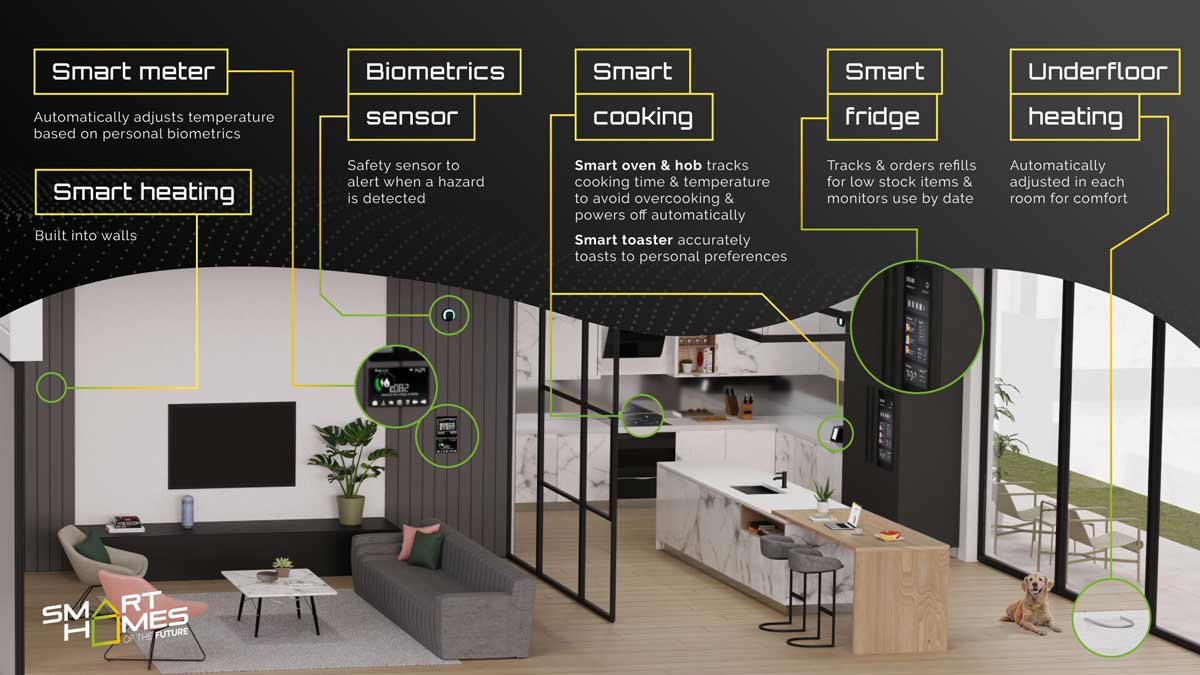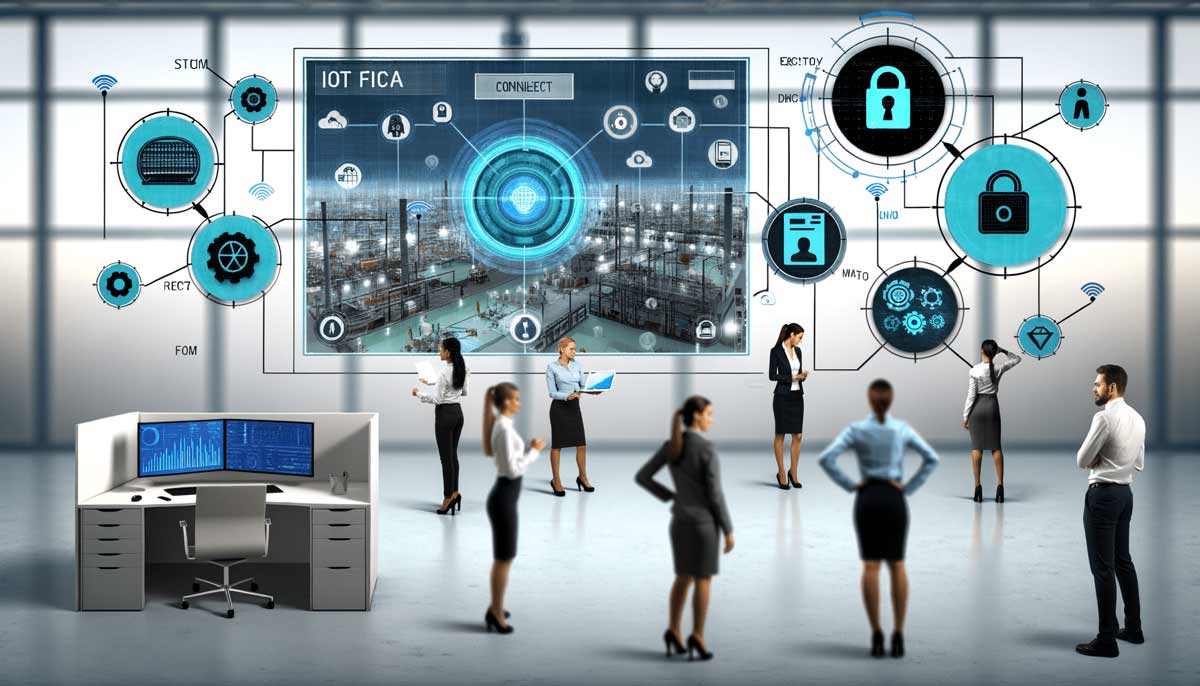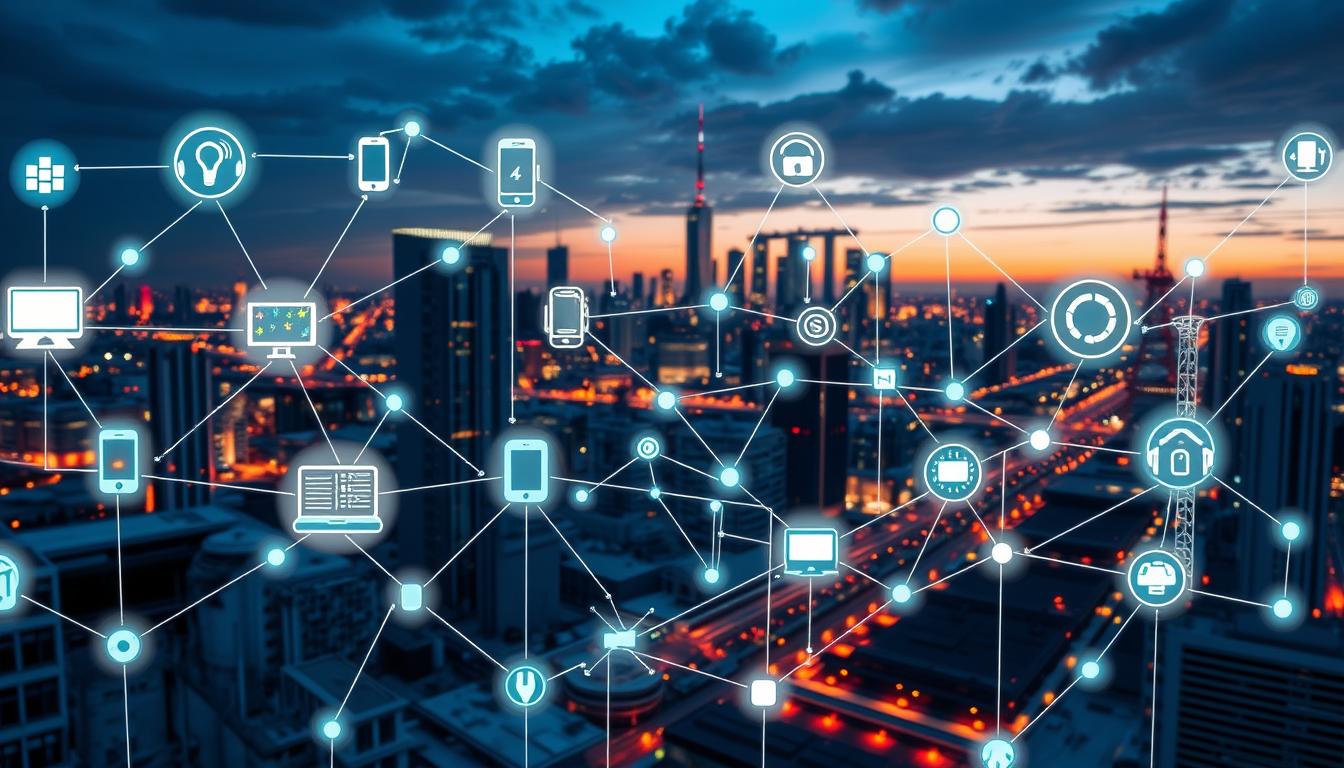The Next Wave of Smart Home Innovations (2025–2027)
The period from 2025 to 2027 will be marked by rapid evolution in smart home technology, pushing the boundaries of what IoT devices can do in residential settings. Home automation will transcend simple device control and enter an era of seamless, intelligent ecosystems capable of predicting and responding to the unique needs of homeowners.
Emerging IoT Technologies Shaping Homes
As connectivity improves and AI becomes more sophisticated, smart homes will feature a new generation of devices that work collaboratively rather than in isolation. These advancements will focus on:
-
Advanced AI and Machine Learning: Devices will learn occupants’ behaviors to automate tasks intuitively. For example, smart thermostats will not only follow schedules but also optimize energy usage based on weather forecasts and occupancy patterns.
-
Enhanced Interoperability: One of the biggest pain points for smart home adoption has been device incompatibility. By 2027, manufacturers are expected to adopt universal communication protocols, enabling devices from different brands to operate in harmony.
-
Context-Aware Smart Devices: Devices such as smart mirrors and lighting will adapt in real time to the user’s mood, time of day, or activities. For instance, a smart mirror may display personalized news, weather, and health insights while adjusting ambient lighting to create a relaxing environment.
-
Predictive Maintenance: IoT sensors embedded in home appliances will monitor performance and predict failures before they occur, alerting homeowners and scheduling service automatically.
Examples of Next-Gen Smart Home Devices
-
Smart Mirrors with AI Health Monitoring
Mirrors equipped with sensors to track skin conditions, posture, or vital signs, connected to health apps for proactive wellness management. -
Adaptive Lighting Systems
Lighting that changes intensity and color temperature based on circadian rhythms, helping improve sleep quality and mood. -
Predictive Kitchen Appliances
Refrigerators that notify you of expired products, suggest recipes based on contents, and order groceries automatically. -
Home Energy Management Systems
Advanced energy hubs that integrate solar panels, battery storage, and IoT devices to maximize renewable energy use and reduce costs.
Market Forecast Table: Smart Home Device Adoption by 2027
| Device Category | Estimated Adoption Rate (2027) | Average Cost per Unit (USD) | Key Benefits |
|---|---|---|---|
| AI-Powered Thermostats | 65% | $150 – $300 | Energy savings, comfort optimization |
| Smart Security Systems | 70% | $200 – $600 | Enhanced home protection |
| Adaptive Lighting Solutions | 55% | $100 – $400 | Mood improvement, energy efficiency |
| Smart Kitchen Appliances | 40% | $400 – $1200 | Convenience, waste reduction |
| Predictive Maintenance Sensors | 35% | $50 – $150 per sensor | Appliance longevity, cost savings |
| Health-Monitoring Smart Mirrors | 20% | $700 – $1500 | Wellness tracking, personalized care |
| Integrated Home Energy Hubs | 25% | $1000 – $3000 | Renewable energy management |
SEO & Trend Keywords Integration
-
Emerging smart home devices 2025-2027
-
AI-powered home automation trends
-
Predictive maintenance IoT devices
-
Interoperability in smart homes
-
Energy management smart home systems
-
Smart kitchen technology innovations
-
Adaptive lighting benefits for health
-
Smart mirrors for home wellness

Design02_Downstairs IOT of smart home
The next two years will introduce smart home devices that not only respond but anticipate homeowners’ needs, creating more efficient, comfortable, and healthier living spaces. These innovations will pave the way for the fully autonomous homes we expect by 2030.
From Automation to Autonomy (2028–2030)
As we move closer to 2030, smart home technology will evolve from reactive automation toward fully autonomous systems that manage nearly every aspect of domestic life without human intervention. This era will be defined by the convergence of AI, robotics, 5G/6G connectivity, and edge computing.
The Shift to Autonomous Smart Homes
By 2028, homes will transition from being “smart” to “self-managing.” These homes will learn, adapt, and operate proactively — making decisions to optimize energy, security, comfort, and convenience in real time. The following trends will dominate this phase:
-
Autonomous Home Robots
Robotics integrated with AI will perform complex tasks such as cleaning, cooking, security patrols, and elder care assistance with minimal human oversight. -
Edge AI and Real-Time Processing
Instead of relying heavily on cloud servers, edge computing will allow devices to process data locally, enabling faster decision-making and better privacy. -
5G/6G Network Integration
Ultra-fast, low-latency networks will facilitate seamless communication among numerous IoT devices, allowing homes to coordinate activities instantaneously. -
Personalized AI Assistants
AI will become highly personalized, adapting communication styles and anticipating needs based on continuous learning from user behavior and preferences. -
Sustainability-Driven Automation
Smart homes will optimize water and energy consumption dynamically, integrating with smart grids and local renewable energy sources for a net-zero carbon footprint.
Cutting-Edge Autonomous Devices
-
Robotic Caregivers and Companions
Robots designed for elderly or disabled residents to provide assistance with mobility, medication reminders, and emergency alerts. -
AI-Driven Smart Kitchens
Fully automated kitchens that prepare meals based on nutritional needs, preferences, and even schedule deliveries to replenish ingredients. -
Integrated Home Ecosystem Controllers
Central AI hubs coordinating lighting, HVAC, security, entertainment, and appliances to maximize efficiency and comfort. -
Smart Water Management Systems
Systems that detect leaks, optimize irrigation, recycle greywater, and monitor consumption in real time.
Market Forecast Table: Autonomous Smart Home Technologies (2028–2030)
| Device / System | Projected Market Penetration (2030) | Estimated Cost Range (USD) | Key Features & Benefits |
|---|---|---|---|
| Autonomous Cleaning Robots | 75% | $300 – $1,200 | Hands-free maintenance, time-saving |
| AI-Powered Elderly Care Robots | 40% | $2,000 – $10,000 | Safety, health monitoring, companionship |
| Edge AI Home Hubs | 60% | $250 – $800 | Privacy, speed, offline capabilities |
| 5G/6G IoT Network Routers | 80% | $150 – $600 | Ultra-fast, low latency connectivity |
| AI-Driven Smart Kitchens | 50% | $3,000 – $15,000 | Automated cooking, grocery management |
| Smart Water & Waste Systems | 45% | $500 – $2,000 | Sustainability, cost savings |
SEO & Trend Keywords Integration
-
Autonomous smart home devices 2030
-
AI robotics in home automation
-
Edge computing in IoT smart homes
-
5G and 6G for connected homes
-
Smart kitchen automation trends
-
Elder care robots for smart homes
-
Sustainable smart home technologies
-
AI-driven personalized home assistants
By the end of this decade, homes will no longer just respond to commands; they will anticipate and act autonomously. Robotics and AI will play a pivotal role in transforming homes into intelligent ecosystems that improve quality of life, energy efficiency, and safety like never before.
Preparing Your Home for the Future — What to Expect and How to Upgrade (2030 and Beyond)
As we approach and pass the year 2030, smart homes will become fully integrated, adaptive ecosystems designed to anticipate and meet the needs of residents in real time. Preparing for this future means understanding emerging technologies, planning infrastructure upgrades, and adopting devices that ensure long-term compatibility.
Key Trends Defining the Post-2030 Smart Home Era
-
Hyper-Personalization Through AI
AI will no longer just assist but become an integral part of the home’s identity, tailoring environment, security, entertainment, and even social interactions based on deep learning of inhabitants’ habits and preferences. -
Interoperability Standards and Ecosystem Unification
Universal communication protocols will be established, allowing all smart devices — regardless of brand — to seamlessly work together in a cohesive home ecosystem. -
Biometric and Behavioral Security Systems
Advanced multi-factor security using biometrics, behavior analysis, and continuous authentication will protect homes with near-zero vulnerabilities. -
Augmented Reality (AR) and Virtual Reality (VR) Integration
AR/VR interfaces will transform how residents interact with their homes, from virtual walkthroughs of smart system settings to immersive entertainment environments. -
Sustainability and Self-Sufficient Homes
Homes will leverage renewable energy, waste recycling, and smart water management to become largely self-sufficient and eco-friendly.

IoT Architecture | Internet Of Things Architecture For Beginners
How to Upgrade Your Home for the Future IoT Ecosystem
-
Upgrade Your Network Infrastructure
Install the latest high-speed wireless networks (6G expected around 2030) and fiber-optic broadband to support heavy IoT data traffic. -
Invest in a Modular Smart Hub
Choose smart home hubs designed with open architecture supporting multiple communication protocols (Zigbee, Z-Wave, Matter, Thread). -
Implement Advanced Sensors and Automation Devices
Sensors for air quality, occupancy, light, and noise will allow the home to adapt continuously to environmental and occupant changes. -
Adopt AI-Powered Management Systems
Utilize AI platforms capable of learning your routines and autonomously managing heating, lighting, security, and appliances. -
Integrate Renewable Energy Solutions
Solar panels, home batteries, and smart grid interfaces will reduce energy costs and environmental impact. -
Plan for Future-Proof Security
Install biometric access controls, behavior-based intrusion detection, and AI-driven threat analytics.
Table: Recommended Upgrades and Investment Costs (2025–2030)
| Upgrade Category | Description | Estimated Cost (USD) | Expected Benefits | Priority Level |
|---|---|---|---|---|
| High-Speed Network (6G) | Next-gen wireless + fiber-optic infrastructure | $1,000 – $5,000 | Supports multiple devices, low latency | High |
| Modular Smart Hub | Open architecture, multi-protocol support | $300 – $1,200 | Device compatibility, ease of control | High |
| Advanced Environmental Sensors | Air quality, occupancy, noise, light sensors | $200 – $1,000 | Enhanced automation, health benefits | Medium |
| AI Management System | Learning algorithms for home management | $1,500 – $5,000 | Energy savings, convenience | High |
| Renewable Energy Systems | Solar panels, batteries, smart grid integration | $5,000 – $20,000 | Cost reduction, sustainability | Medium to High |
| Biometric & Behavioral Security | Fingerprint, facial recognition, behavior AI | $1,000 – $7,000 | Enhanced home protection | High |
| AR/VR Home Integration | Interactive control via augmented/virtual reality | $500 – $3,000 | Immersive user experience | Low to Medium |
SEO & Long-Tail Keywords of Smart Homes:
-
Future-proof smart home upgrades
-
Preparing home for 2030 IoT technology
-
AI personalization in smart homes
-
Modular smart hubs for IoT devices
-
Biometric security systems for homes
-
Renewable energy integration in smart homes
-
AR/VR smart home interfaces
-
Smart home interoperability standards
The homes of 2030 and beyond will require thoughtful upgrades today. Investing in scalable, interoperable, and intelligent technologies will ensure your home not only stays ahead of trends but also enhances daily living through increased automation, security, and sustainability.
The Future Outlook, FAQs, and Conclusion
Looking Beyond 2030: The Vision of Tomorrow’s Smart Homes
As we look past 2030, the evolution of home IoT technology will accelerate toward a future where homes are more than smart — they will be sentient, sustainable, and symbiotic partners in daily life.
-
Homes as AI Companions
Fully integrated AI will anticipate needs and emotions, adapting environments proactively and even initiating social interaction, personal coaching, or wellness support. -
Zero-Carbon, Self-Healing Homes
IoT will enable homes to manage energy flows, repair structural issues autonomously through robotic systems, and produce food via integrated vertical gardens. -
Smart Cities Integration
Homes will connect with smart city infrastructures for seamless utility management, transportation, and emergency services.

The-IoT-Revolution-and-Your-Business-Recovered
Frequently Asked Questions (FAQ)
Q1: What are the key benefits of upgrading to future-ready smart home technologies?
A1: Benefits include enhanced energy efficiency, improved security through biometrics, personalized comfort via AI, cost savings, and increased property value.
Q2: Where can I find reliable smart home hubs that support multiple IoT standards?
A2: Brands like Samsung SmartThings, Hubitat Elevation, and emerging open-platform hubs offer compatibility with Zigbee, Z-Wave, Matter, and Thread protocols.
Q3: How can AI improve home automation beyond current capabilities?
A3: AI will enable predictive adjustments based on habits and real-time environmental data, learning user preferences to automate complex routines without manual input.
Q4: Who should consider investing in renewable energy integration for their smart home?
A4: Homeowners looking to reduce carbon footprint, lower utility bills, or achieve energy independence should prioritize solar panels, home batteries, and smart grids.
Q5: When is the best time to upgrade home networks to support IoT expansion?
A5: Ideally before adding multiple IoT devices — upgrading to Wi-Fi 6E or preparing for 6G infrastructure ensures reliable connectivity as device numbers grow.
Q6: What security risks do advanced IoT homes face, and how can they be mitigated?
A6: Risks include data breaches and unauthorized access. Mitigation involves multi-factor authentication, biometric security, continuous behavioral monitoring, and encrypted communication.
Q7: Where will AR/VR interfaces make the biggest impact in smart homes?
A7: AR/VR will revolutionize home control panels, immersive entertainment, virtual design planning, and remote home monitoring experiences.
Q8: How much should homeowners budget for future-proof smart home upgrades?
A8: Budgets vary widely ($5,000–$40,000+), depending on desired features, size of the home, and level of integration; phased upgrades are recommended.
Q9: Who are the leading companies innovating in post-2025 IoT home tech?
A9: Key players include Google Nest, Amazon Alexa, Apple HomeKit, Samsung SmartThings, and emerging startups focused on AI, security, and sustainable tech.
Q10: What are the common pitfalls when upgrading to future smart home technologies?
A10: Pitfalls include lack of compatibility, insufficient network infrastructure, neglecting security, and over-investing in unproven tech; planning and expert consultation are crucial.
Final Table: Future IoT Home Trends & Expected Impact
| Trend | Description | Impact on Homeowners | Estimated Timeline |
|---|---|---|---|
| AI-Driven Home Ecosystems | Fully adaptive AI controlling all home functions | Personalized comfort, efficiency, safety | 2025–2035 |
| Universal IoT Standards | Protocols ensuring device interoperability | Simplified setup, broad device compatibility | 2025–2030 |
| Biometric & Behavioral Security | Advanced, continuous authentication systems | Enhanced security, reduced false alarms | 2025–2032 |
| Renewable Energy Integration | Solar, wind, smart grids integrated with IoT | Energy independence, sustainability | 2025–2035 |
| AR/VR Home Control Interfaces | Immersive interfaces for home management | Enhanced user interaction, visualization | 2028–2035 |
| Self-Healing Home Technologies | Robotic repairs and maintenance systems | Lower maintenance costs, increased lifespan | 2030+ |
| Smart City Ecosystem Connectivity | Homes connected to smart city infrastructure | Optimized utilities, improved safety | 2030+ |
Conclusion
The future of home IoT technology is exciting and transformative. By embracing the right upgrades today, homeowners can ensure their homes evolve into intelligent, secure, sustainable living spaces that enhance quality of life. Staying informed, prioritizing interoperability, investing in AI and security, and planning for renewable energy will be key steps toward fully realizing the potential of smart homes between 2025 and 2030 — and beyond.


